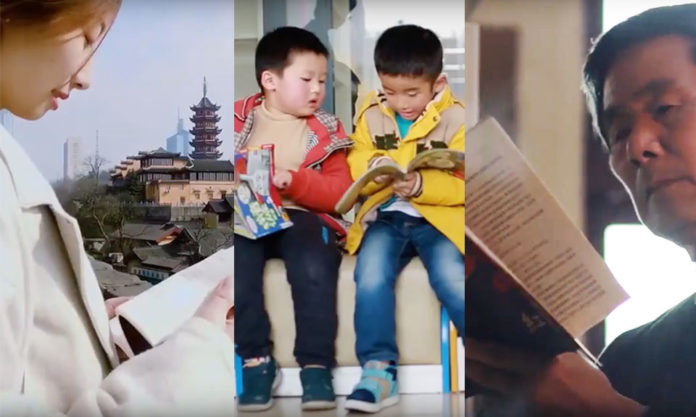On 30 October, 2019, came the announcement from the United Nations Educational, Scientific and Cultural Organisation (UNESCO) that Nanjing’s bid to become China’s first City of Literature had been successful. Nanjing, together with 10 other cities, take the City of Literature total to 39 worldwide.
Part of the wider Creative Cities Network launched by UNESCO in 2004, the category of literature has as partners Crafts and Folk Art, Design, Film, Gastronomy, Media Arts and Music.
Last week’s happy news for Nanjing had as backdrop, Director-General of UNESCO, Audrey Azoulay, designating 66 new cities as UNESCO Creative Cities, taking the global total to 246. “All over the world, these cities, each in its way, make culture the pillar, not an accessory, of their strategy”, Azoulay was quoted as saying.
Reporting in 2017 on Nanjing’s beginnings in its bid for City of Literature status, China Daily said of Nanjing, “It is known for its literary history and heritage as it [is] home to one world cultural heritage site and four world intangible cultural heritage items”.
On the literature front, UNESCO calls on candidate cities to be preeminent in publishing and drama, while hosting literary events and festivals with educational programs focused on literature, together with extensive libraries, bookstores and cultural centres which preserve the culture of both domestic and foreign literature.
The Dream of the Red Mansions
Of our selected great literary works produced in Nanjing, it would likely be a municipal offense to start with anything other than “The Dream of the Red Mansions” by Cao Xueqin. One of the Four Great Classic Novels (四大名著), such is status of this work locally that stations on Nanjing Metro Line 3 are decorated in the theme of the tome. Elsewhere, the Jiangning Imperial Silk Manufacturing Museum features a permanent exhibition devoted to this seminal piece of Chinese literature.
The Yongle Encyclopedia
Commissioned in 1403 by Emperor Yongle, the last Ming Emperor to grant Nanjing capital status, the “Yongle Encyclopedia” was a mammoth project. It gathered together the entirety of Chinese knowledge from ancient times up until the early Ming Dynasty. It took over two thousand scholars 5 years to complete the work and when it was finally published in 1408, the Yongle Encyclopedia comprised almost 23,000 manuscripts in over 11,000 volumes containing 370 million Chinese characters. It remained the largest encyclopedia in the world for the next 600 years.
Compendium of Materia Medica
Li Shizhen took 27 years to complete his “Compendium of Materia Medica” that lists all plants, animals, minerals, and other items that were believed to have medicinal properties. Li’s masterpiece is regarded as the most complete and comprehensive medical book ever written in the history of Traditional Chinese Medicine.
The Good Earth
In the modern age, Pearl S. Buck’s “The Good Earth” won the Pulitzer Prize for Fiction in 1932. The title was the best-selling novel in the USA in both 1931 and 1932 and went on to be one of the most popular novels of the 20th century. Luise Rainer won an Academy Award for best actress in the film version of the novel, released in 1937 by Metro-Goldwyn-Mayer. In 1938, Buck became the first American woman to win the Nobel Prize for Literature. For more than 30 years following publication, Buck’s novel played a greater role in shaping Western attitudes toward China than any other book. She wrote the book in Nanjing.
Massage
Many Chinese works written in Nanjing have also been translated into other languages. Bi Feiyu worked for Nanjing Daily for 6 years and went on to write “Massage”, the 2011 Mao Dun Literary Prize winner, translated into English and published by Penguin Random House in China. The book charts the inner lives of a group of blind masseuses working in Nanjing.
Libraire Avant Garde
With thousands of literary societies and associations, there are more than 450 book clubs in Nanjing, while the city is also home to Libraire Avant Garde, the bookshop with a location in an underground car park that prompted CNN to tag it as, “China’s most beautiful bookshop”.
Amity Bible Printing
Literature, it should be remembered, comes in many forms. China’s largest charity, the Amity Foundation, has a bible-printing arm in Nanjing’s Jiangning District that is the world’s largest, by output. Bibles printed in Nanjing are sent to more than 70 countries and regions in as many different languages, including English, German, Spanish, French and many African languages.
With these examples as just the tip of the iceberg as to Nanjing’s literary credentials, last week’s award from UNESCO will undoubtedly inspire many a budding author in Nanjing to put pen to paper, insuring that Nanjing’s fine reputation be immortalised, as City of Literature.









